Welcome to the Digital Thunderdome: Two Search Engines Enter, One Algorithm Leaves
If you've ever wondered what would happen if two search engines had a cage match, wonder no more! In the red corner, weighing in with 76% of China's market share, we have the homegrown hero, the government's favorite digital son—Baidu! And in the blue corner, banned in China but dominating literally everywhere else on planet Earth, the global heavyweight champion—Google!
In 2025, understanding these two search behemoths isn't just marketing trivia—it's the difference between being digitally visible to 724 million Chinese internet users or existing in the online equivalent of the Bermuda Triangle. Let's break down this rivalry with all the subtlety of a search algorithm update.
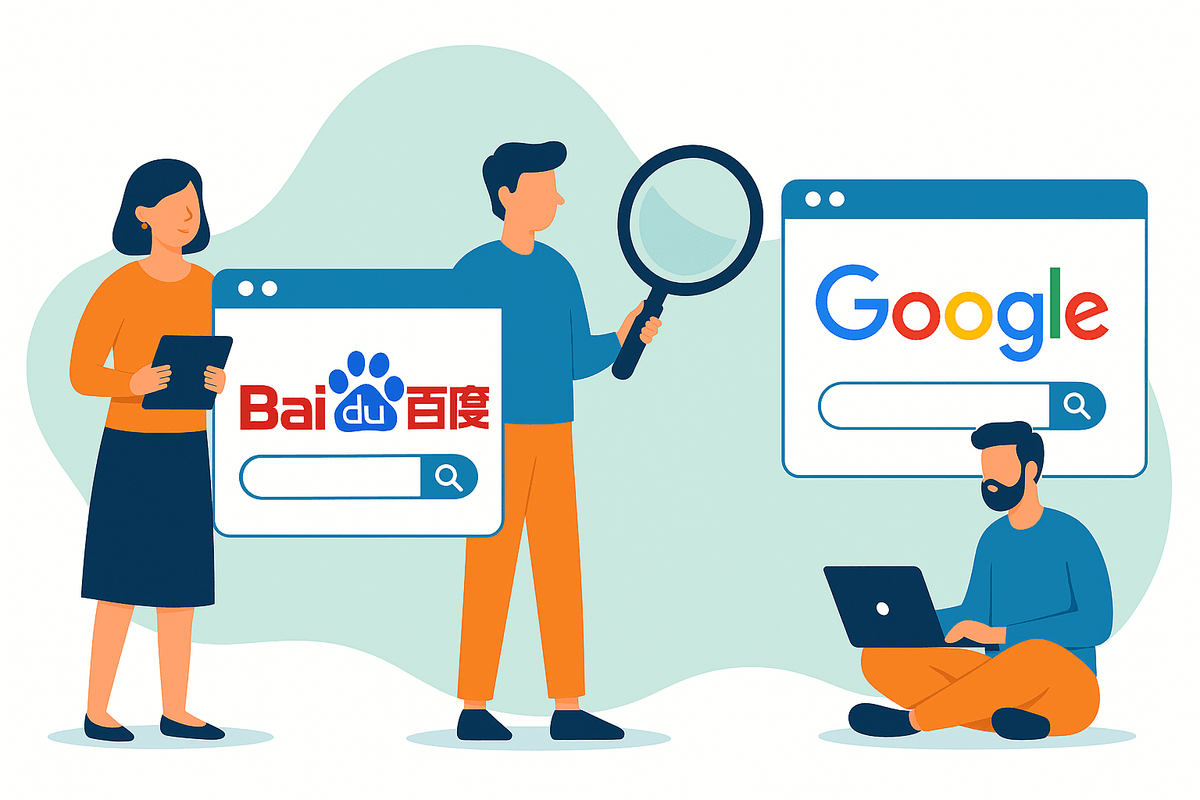
Search Engine Landscape: 2025 By The Numbers (Or "Why Your Digital Marketing Director Keeps Asking for More Budget")
- Total Internet Users: 724 million (roughly the combined population of North America, but with better mobile coverage)
- Baidu Market Share: 76% (the remaining 24% mostly consists of people trying to figure out how to access Google)
- Monthly Search Queries: 5.4 billion (approximately how many times people search "why is SEO so complicated" each month)
- Mobile Search Penetration: 92% (because apparently desktops are now considered vintage collectibles in China)
- Average User Session Duration: 45 minutes (about 44 minutes longer than the average marketer's explanation of their SEO strategy to their CEO)
Difference #1: Market Penetration and User Base (Or "Why Geography Is Destiny in Search")
Baidu: The Emperor of Chinese Search
- Market Share: 76% (a number that makes Baidu executives sleep well at night)
- Monthly Active Users: 650 million (slightly more than the population of North America, all searching for things you're probably not optimizing for)
- Dominant in: Mainland China (where it reigns supreme like dumplings at a Chinese restaurant)
- Primary User Demographics: 18-45 age group (people old enough to search independently but young enough to understand technology)
- Language Support: Simplified Chinese (because why support multiple languages when you've got 1.4 billion people who speak the same one?)
Google: The Search Engine That Rules Everywhere Else
- Global Market Share: 91.9% outside China (a number that would make Baidu executives weep if they weren't already wealthy)
- Monthly Active Users: 4.3 billion (approximately half the planet's population, no big deal)
- Blocked in: Mainland China (where it's mentioned in the same hushed tones as Voldemort—"The Search Engine That Must Not Be Named")
- Accessible via: Hong Kong, VPN (for those willing to engage in the digital equivalent of smuggling)
- Language Support: 150+ languages (showing off, much?)

Difference #2: Algorithm and Ranking Factors (Or "Why Your Western SEO Expert Is Useless in China")
Baidu's Algorithmic Personality
Key Ranking Factors:
- Chinese Language Content Prioritization (your English content might as well be written in Klingon)
- Local Backlink Quality (links from Chinese sites matter; your impressive .com backlinks mean nothing)
- Government-Approved Websites (because nothing says "trustworthy" like a government stamp of approval)
- Mobile Optimization (if it doesn't work perfectly on a smartphone, it doesn't exist)
- Social Media Integration (but not the social media platforms you're thinking of)
Unique Algorithmic Features:
- Strong preference for local content (showing patriotic favoritism that would make a sports fan proud)
- Stricter content censorship (some keywords are more forbidden than saying "Voldemort" at Hogwarts)
- Slower indexing process (because good things come to those who wait... and wait... and wait...)
- Heavy emphasis on state-approved sources (making government websites more valuable than cryptocurrency)
Google's Global Approach
Key Ranking Factors:
- Content Relevance (revolutionary concept: showing users what they're actually looking for)
- Backlink Diversity (the more different sites that like you, the more Google likes you—it's basically high school popularity all over again)
- User Experience (because Google cares about your feelings, or at least how long you stay on a page)
- Page Loading Speed (in Google's world, every millisecond of delay is a personal insult)
- Mobile Responsiveness (if your site doesn't work on mobile, Google puts it in digital timeout)
Algorithmic Characteristics:
- Global content indexing (no country left behind!)
- More transparent ranking criteria (they'll tell you what they want... sort of... sometimes... in riddles)
- Faster crawling and indexing (Google's spiders are on digital caffeine)
- Emphasis on user intent (Google trying to read your mind, with varying degrees of success)
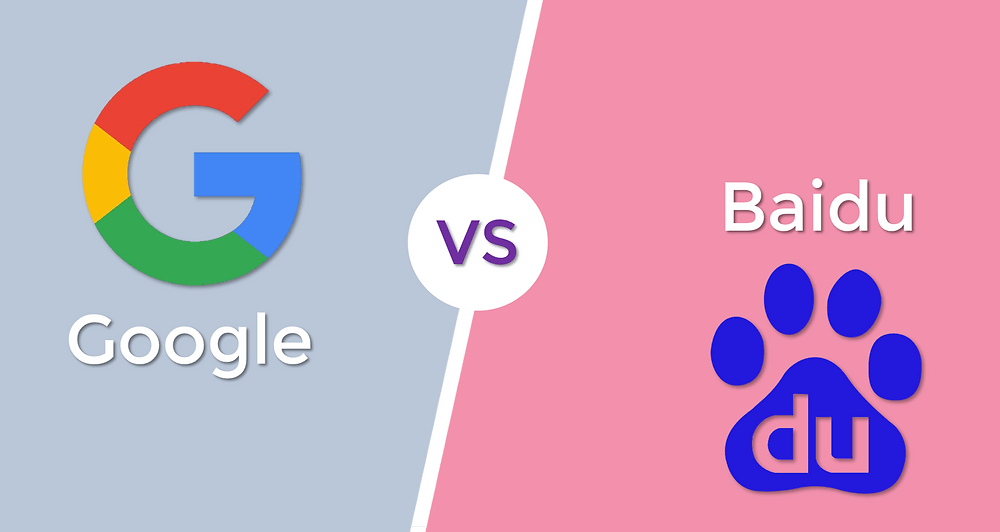
Difference #3: Content and SEO Requirements (Or "Why You Need Two Completely Different Strategies")
Baidu SEO Ecosystem
Content Optimization Strategies:
- Simplified Chinese language (and no, Google Translate won't cut it—Baidu can smell machine translation like a bloodhound)
- Locally hosted websites (preferably on a server so local you can visit it for tea)
- .cn domain preference (because nationalism extends to domain extensions)
- Heavy text-based content (Baidu loves reading more than your high school English teacher)
- Limited multimedia integration (because reading is fundamental, videos are supplemental)
Compliance Requirements:
- ICP License mandatory (a bureaucratic adventure more complex than filing taxes)
- Government content guidelines (a list of no-nos longer than a CVS receipt)
- Strict censorship protocols (topics more taboo than discussing salary at a family dinner)
- Local hosting requirements (keeping your data close enough to visit on weekends)
Google SEO Landscape
Content Optimization Strategies:
- Multilingual support (showing off its linguistic flexibility like that friend who "casually" mentions they speak five languages)
- Global content strategies (because Google is a citizen of the world)
- Domain flexibility (.com, .org, .whatever—Google's not picky)
- Rich multimedia content (videos, images, audio—the more formats, the merrier)
- Structured data importance (Google loves when you organize information like a librarian with OCD)
Compliance Characteristics:
- More lenient content guidelines (relatively speaking—try not to be evil, but the definition is flexible)
- Global hosting options (put your server anywhere with decent WiFi)
- Advanced schema markup (speaking Google's secret language gets you special treatment)
- AI-powered content evaluation (judged by robots, for better or worse)
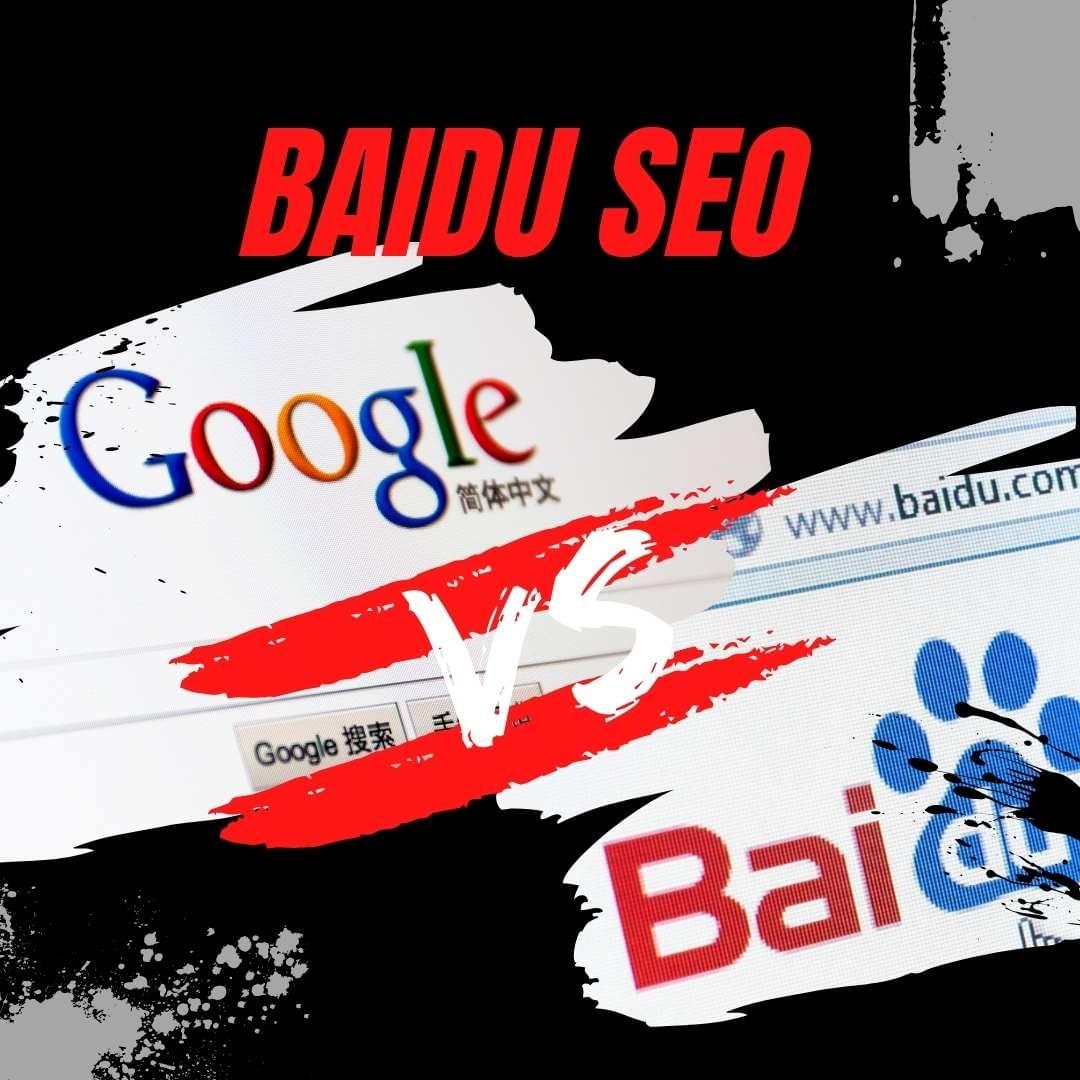
Difference #4: Advertising and Monetization (Or "How to Spend Money Differently in Each Ecosystem")
Baidu Advertising Ecosystem
Advertising Platforms:
- Baidu PPC (like Google Ads' cousin who does things slightly differently just to be difficult)
- Baidu Tuiguang (which you'll mispronounce for the first six months)
- Native Advertising (ads disguised as content, like a digital wolf in sheep's clothing)
- WeChat Integration (because in China, everything eventually connects to WeChat)
- Limited International Options (making foreign marketers feel like digital aliens)
Pricing Model:
- Lower cost per click (the silver lining to the compliance cloud)
- Local payment systems (hope you like Chinese banking bureaucracy!)
- RMB-based transactions (making your accounting department learn currency conversion)
- Government-regulated pricing (because even capitalism needs supervision)
Google Advertising Landscape
Advertising Platforms:
- Google Ads (the OG of digital advertising)
- YouTube Advertising (interrupting cat videos since 2007)
- Display Network (putting your ads on websites you've never heard of)
- Global Targeting (reaching people from Alabama to Zimbabwe)
- Extensive International Reach (geographical boundaries are so 20th century)
Pricing Model:
- Competitive bidding (turning advertising into a digital auction house)
- Multiple currency support (because Google loves all money equally)
- Advanced targeting options (finding people based on what they ate for breakfast)
- Performance-based pricing (pay more to reach people who actually care)
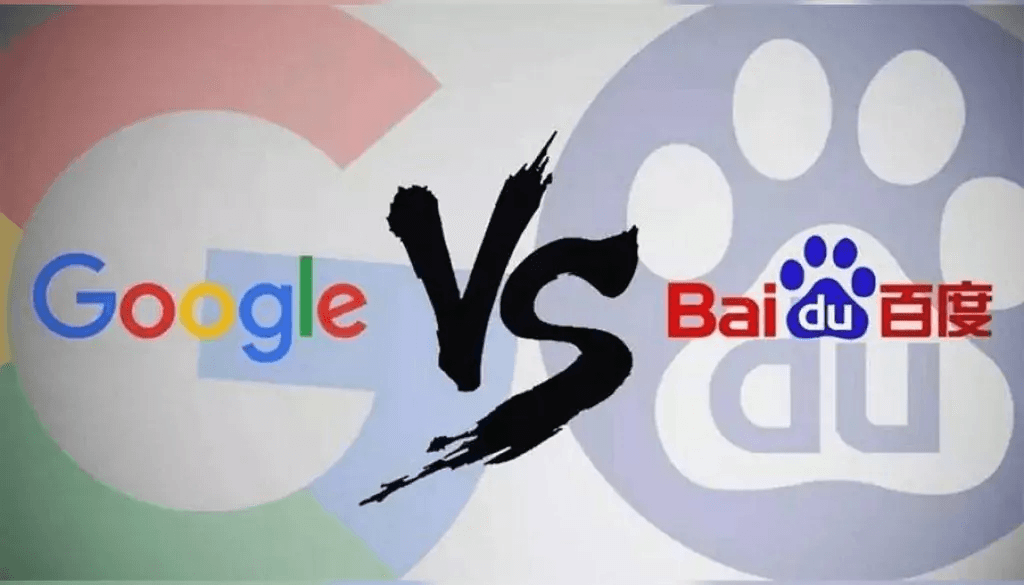
Difference #5: Mobile and User Experience (Or "The Smartphone Showdown")
Baidu Mobile Optimization
Mobile Features:
- 92% mobile search penetration (because in China, desktop computers are increasingly decorative)
- App-integrated search (searching without leaving your favorite app, like digital convenience stores)
- WeChat and Weibo integration (all roads lead to Chinese social media)
- Simplified mobile interfaces (minimalism before it was trendy elsewhere)
- Location-based recommendations (Baidu knowing where you are with slightly alarming accuracy)
Google Mobile Experience
Mobile Characteristics:
- Responsive design priority (if it doesn't adjust to screen size, Google judges you silently)
- Advanced voice search (for people too lazy to type, which is increasingly everyone)
- AI-powered recommendations (sometimes eerily accurate, sometimes hilariously wrong)
- Global device compatibility (works on everything from the latest iPhone to that Android device from 2015 you refuse to replace)
- Extensive language support (because Google wants everyone to search, regardless of mother tongue)
Difference #6: Data Privacy and User Tracking (Or "Who Knows What About You")
Baidu's Data Approach
Privacy Characteristics:
- Government-aligned data policies (what's yours is theirs, what's theirs is classified)
- Limited user data transparency (on a need-to-know basis, and you don't need to know)
- Mandatory real-name registration (anonymity is so last century)
- Restricted international data sharing (what happens in China stays in China)
Google's Privacy Framework
Privacy Features:
- More transparent data policies (they tell you they're watching, which is... better?)
- User consent mechanisms (clicking "I agree" to terms you haven't read—a modern tradition)
- Advanced privacy controls (settings so numerous you'll never configure them all)
- Global data protection standards (varying wildly by country, making compliance a geographic puzzle)
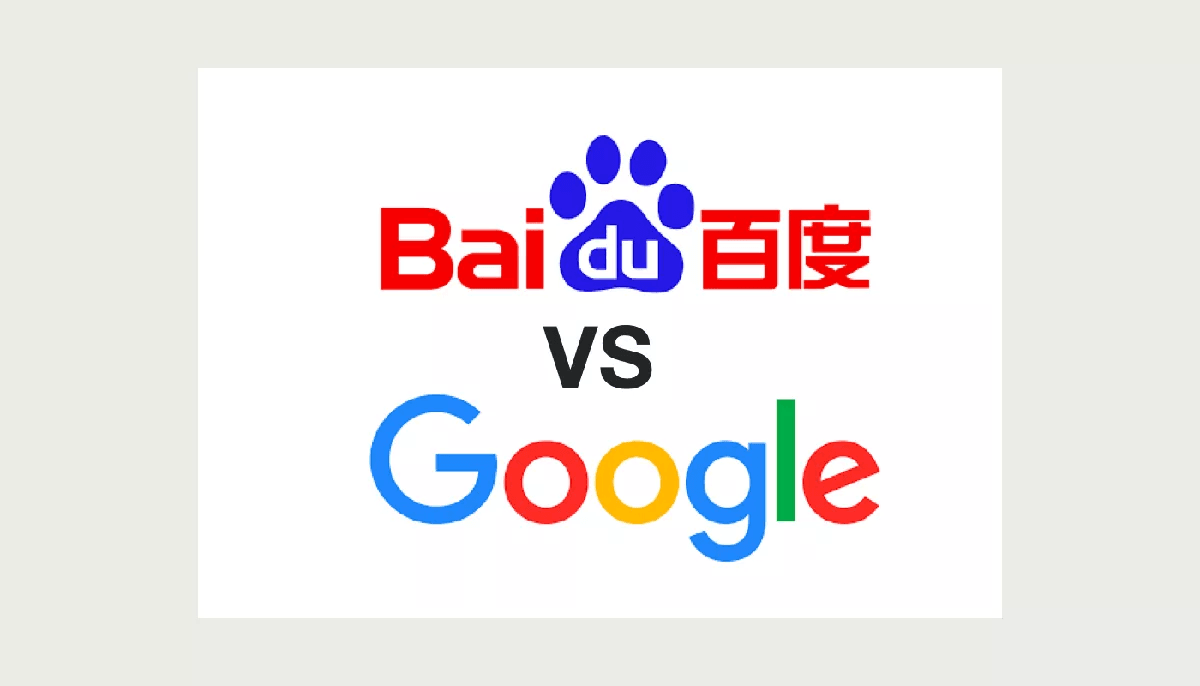
Difference #7: Multimedia and Rich Media Integration (Or "The Battle of Bells and Whistles")
Baidu Multimedia Ecosystem
Content Types:
- Text-heavy search results (Baidu believes reading is fundamental)
- Limited video integration (videos are nice, but have you tried a good paragraph?)
- Image search with local bias (preferring pictures taken on Chinese soil)
- Restricted international content (foreign media gets the digital equivalent of a suspicious glance)
Google Multimedia Experience
Content Diversity:
- Rich multimedia search results (text, images, videos, shopping, maps—it's a digital buffet)
- YouTube video integration (Google's favorite child gets premium placement)
- Advanced image recognition (Google knows that's a cat, not a small dog, thank you very much)
- Global content accessibility (the world's media at your fingertips, for better or worse)
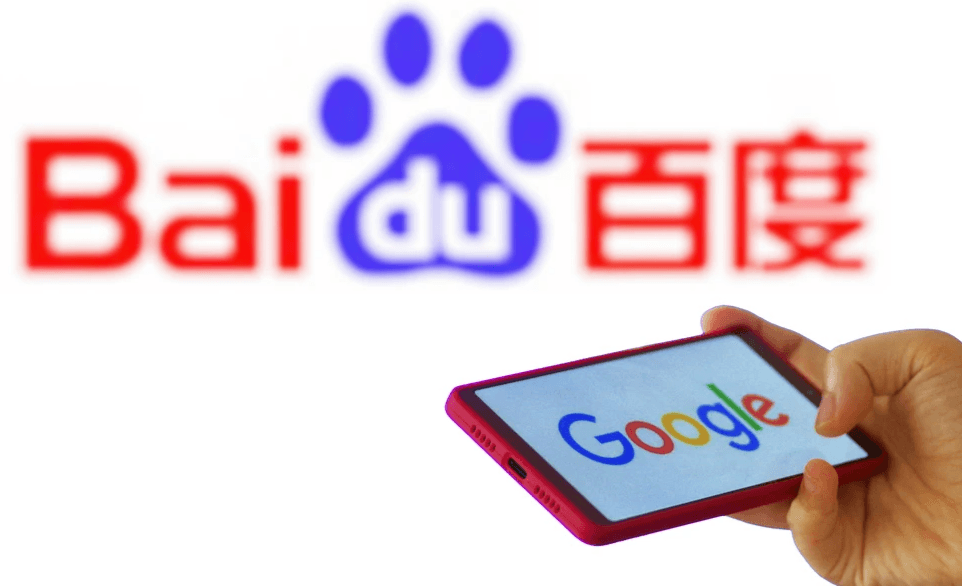
Difference #8: Artificial Intelligence and Future Technologies (Or "The Robot Wars")
Baidu's AI Development
AI Innovations:
- DuerOS voice assistant (like Alexa, but it understands when you're ordering dumplings correctly)
- Apollo autonomous driving (teaching cars to navigate Chinese traffic, a feat more impressive than landing on Mars)
- Healthcare AI applications (making doctors nervous about job security)
- Government-aligned research (innovation with Chinese characteristics)
Google's AI Landscape
AI Technological Frontiers:
- Advanced machine learning (teaching computers to think, what could go wrong?)
- Global AI research (labs everywhere trying to create the next digital breakthrough)
- Diverse application domains (from email completion to predicting when you'll next need toilet paper)
- Ethical AI development (trying to ensure the robots don't take over, at least not immediately)
Conclusion: Navigating the Search Engine Divide (Or "Digital Bilingualism is the Future")
Understanding the differences between Baidu and Google isn't just academic—it's the digital equivalent of being bilingual in an increasingly polarized world. It's not enough to master one search ecosystem; the true digital marketers of 2025 move between these parallel universes with the grace of dimensional travelers, speaking the language of each algorithm fluently.
Remember: In Baidu's world, you're a guest who needs to follow house rules meticulously. In Google's world, you're still following rules, just ones that are written in slightly larger print with more colorful illustrations.
The search engine you use shapes not just what you find, but how you think about finding it—a digital version of the Sapir-Whorf hypothesis that would make linguists proud and marketers exhausted.